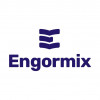Estimating genotype-environment interactions for internal fruit quality traits in cherry tomatoes
View/
URL Fuente
https://doi.org/10.17584/rcch.2020v14i3.11297https://revistas.uptc.edu.co/index.php/ciencias_horticolas/article/view/11297Date
2020Author
Ceballos Aguirre, Nelson
Vallejo Cabrera, Franco Alirio
Morillo Coronado, Yacenia
Publisher
Universidad Pedagógica y Tecnológica de Colombia - UPTCPalabras clave
Citación
Metadata
Show full item record
Documents PDF
Abstract
Genotype-environment interactions (GEI) were assessed in 10 cherry tomato accessions in nine environments, including four artificial settings (0, 60 120, and 180 kg ha-1 of potassium) established on the experimental farms Montelindo (Palestina), Tesorito (Manizales), and CEUNP (Palmira) (Colombia). The plant material included 10 cherry tomato genotypes obtained from the germplasm bank at the Instituto Agronómico de Campinas and Tomato Genetics Resources Center (TGRC). A completely randomized block design with four blocks corresponding to the level of potassium fertilization was used (0, 60, 120, 180 kg ha-1); 0 kg ha-1 was the level reported for the soil. The effective size of the experiment unit was seven plants; the plot included the five central plants. A distance of 1.5 m between rows, 0.50 m between plants, and 2 m between blocks was used. The contents of soluble solids (°Brix), vitamin C (mg/100 g fresh weight), and lycopene (µg g-1 fresh weight) were assessed. The analysis of variance (ANOVA) showed significant differences (P<0.01) between the tomato genotypes, environments, and G×E interactions for the three assessed traits . The AMMI analysis identified similar and contrasting environments and determined the genotypes that contributed the most to the GEI. The environments with 120 and 180 kg ha-1 potassium favored the expression of vitamin C, while Palmira favored the lycopene content. The findings are useful for identifying optimal locations and elite genotypes that can be used as sources of variability in fruit quality improvement programs for cherry tomatoes.
Part of the journal
-
Revista Colombiana de Ciencias Hortícolas; vol. 14, Núm. 3 (2020): Revista Colombiana de Ciencias Hortícolas (Sep.);p. 361–374.
Collections
- Artículos científicos [2093]
Comments
The following license files are associated with this item:





























